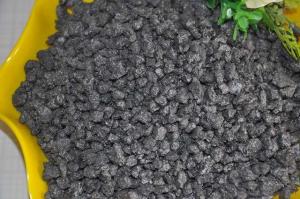Carbon Additve Carbon Raiser for Steel Industry
- Loading Port:
- Tianjin
- Payment Terms:
- TT or LC
- Min Order Qty:
- 20 m.t.
- Supply Capability:
- 10000 m.t./month
OKorder Service Pledge
OKorder Financial Service
You Might Also Like
Quick Details
Place of Origin: Ningxia, China (Mainland)
Application: steel making
Shape: granule
Dimensions: FC90-95%
Product Type: Carbon Additive
C Content (%): 90-95% MIN
Working Temperature: -
S Content (%): 0.5%MAX
N Content (%): -
H Content (%): 0.6%MAX
Ash Content (%): 8.5%MAX
Volatile: 2%MAX
ADVANTAGE: low ash & sulfur
COLOR: Black
RAW MATERIAL: TaiXi anthracite
Packaging & Delivery
| Packaging Details: | In 1MT plastic woven bag. |
|---|---|
| Delivery Detail: | 30-40DAYS |
Specifications
Carbon Additve Carbon Raiser for Steel Industry
Carbon Additve low Ash,S,P
FC>95% ASH<4% S<0.3%
It is made from TaiXi anthracite.
instead of pertrol coke reduce the cost
Structure
Carbon Additve Carbon Raiser for Steel Industry
Shape: granule
Dimensions: FC90-95%
Product Type: Carbon Additive
C Content (%): 90-95% MIN
Working Temperature: -
S Content (%): 0.5%MAX
N Content (%): -
H Content (%): 0.6%MAX
Ash Content (%): 8.5%MAX
Volatile: 2%MAX
ADVANTAGE: low ash & sulfur
COLOR: Black
RAW MATERIAL: TaiXi anthracite
Feature
Carbon Additve Carbon Raiser for Steel Industry
Specifications (%): | ||||||
Grade | F.C | Ash | V.M | Moisture | S | Size |
CR-95 | ≥95 | <4 | <1 | <1 | <0.3 | 0-30mm |
CR-94 | ≥94 | <4 | <1 | <1 | <0.3 | |
CR-93 | ≥93 | <6 | <1 | <1 | <0.4 | |
CR-92 | ≥92 | <7 | <1 | <1 | <0.4 | |
CR-91 | ≥91 | <8 | <1 | <1 | <0.4 | |
CR-90 | ≥90 | <8.5 | <1.5 | <2 | <0.4 | |
Image
Carbon Additve Carbon Raiser for Steel Industry
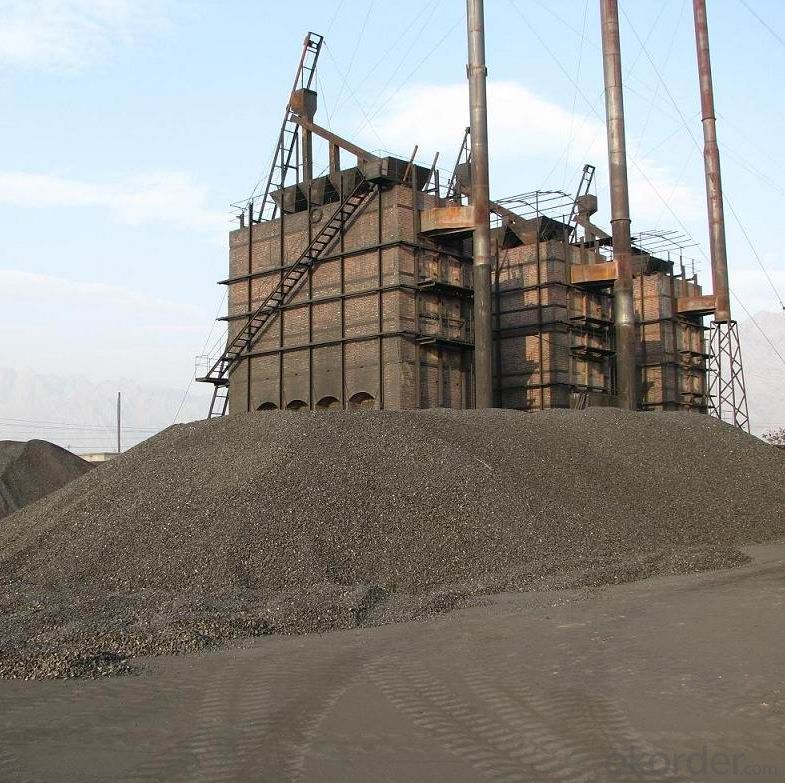
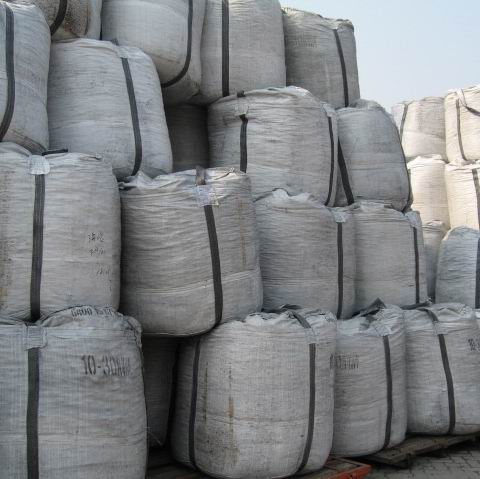
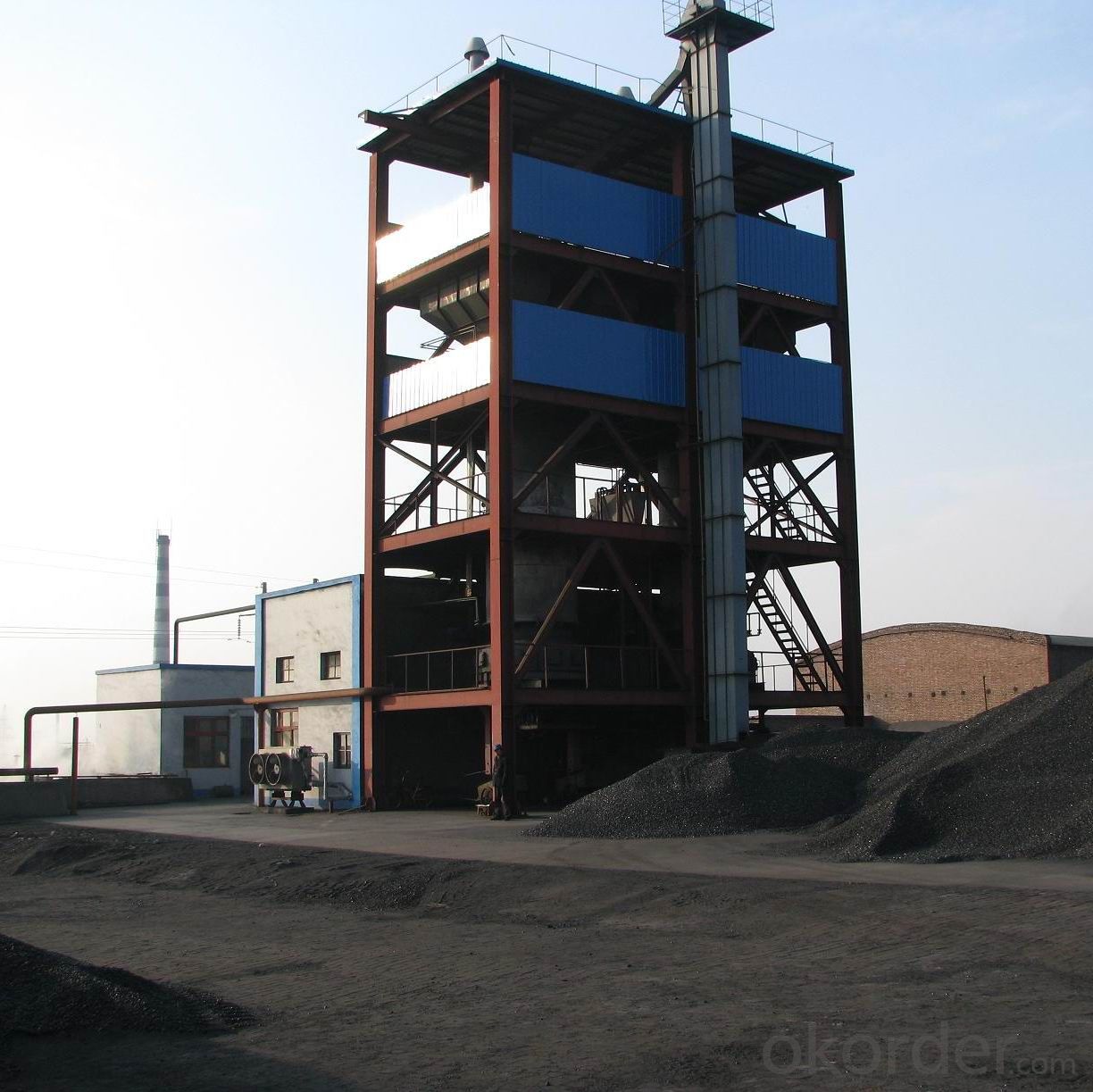
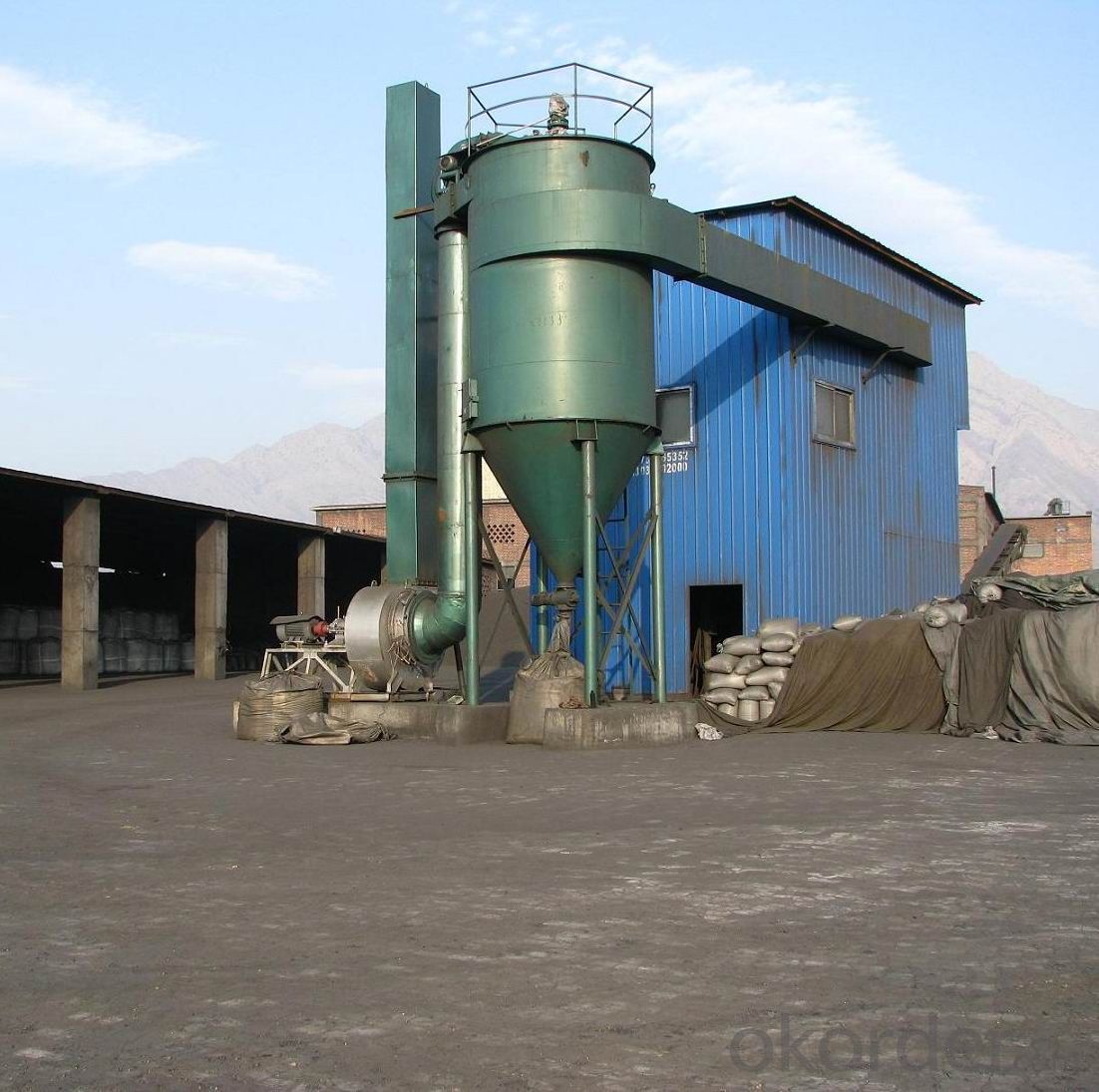
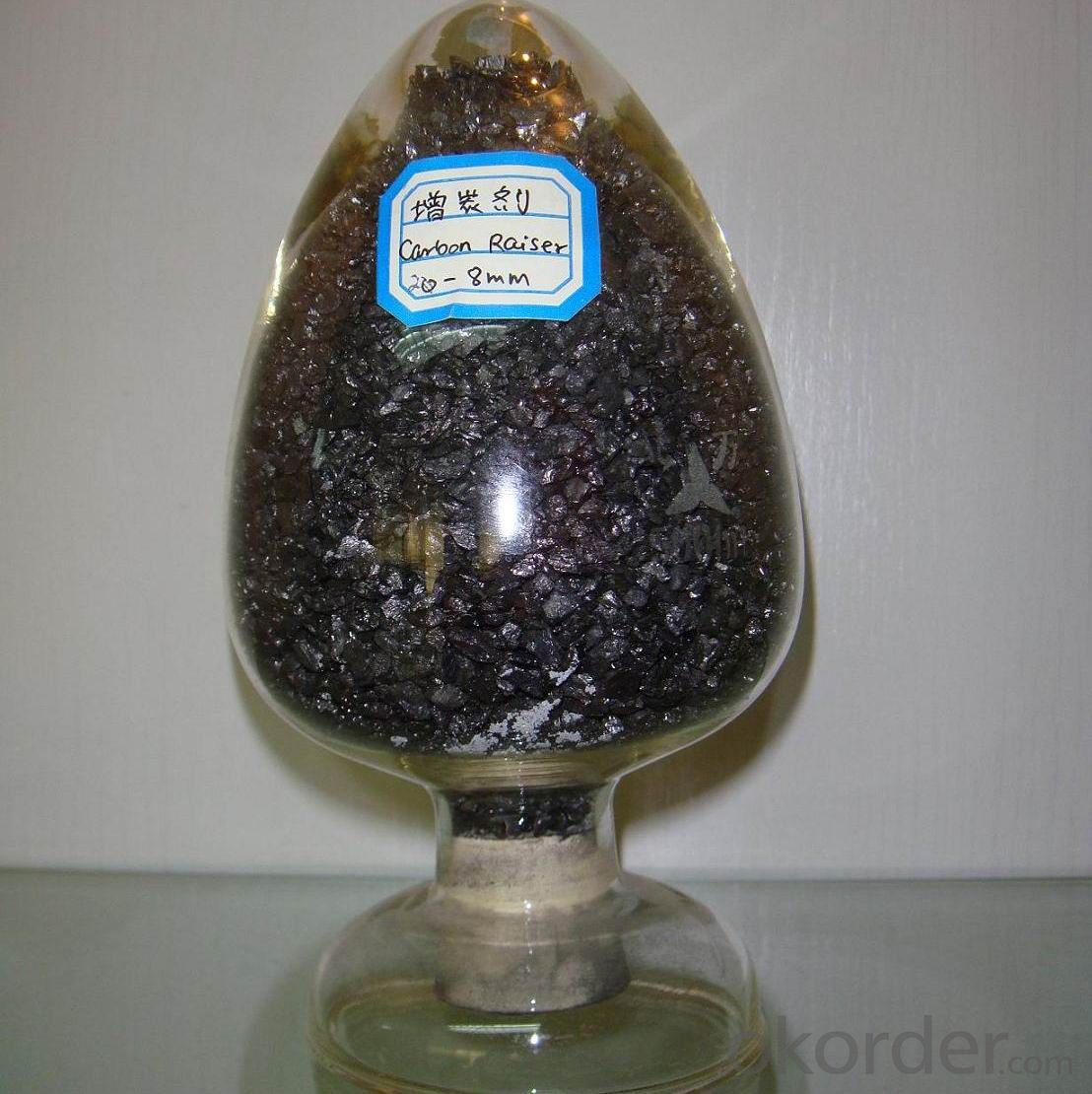
FAQ:
Carbon Additve Carbon Raiser for Steel Industry
Why we adopt carbon additive?
Carbon Additives used as additive in steel making process. It made from well-selected Tai Xi anthracite which is low in content of ash, sulphur, phosphorus, high heat productivity, high chemically activation.
Mainly industry property of it is: instead of traditional pertroleum coal of Carbon Additives, reduce the cost of steelmaking.
Advantage:
Carbon Additve Carbon Raiser for Steel Industry
1.High quality and competitive price.
2.Timely delivery.
3.If any item you like. Please contact us.
Your sincere inquiries are typically answered within 24 hours.
- Q:How does carbon affect the growth of plants?
- Plants rely on carbon for their growth and development, as it is a vital element. It is found in organic compounds like carbohydrates, proteins, and lipids, which are essential for plants' metabolic processes. Photosynthesis allows plants to convert carbon dioxide into glucose and other sugars, providing them with energy for various functions and growth. Additionally, carbon plays a crucial part in building plant structures. Cellulose, a complex carbohydrate composed of carbon, hydrogen, and oxygen, gives rigidity and support to plant cell walls, enabling them to maintain their shape and withstand mechanical stress. Lignin, another carbon-based compound, strengthens stems and roots, allowing plants to grow upright and resist bending or breaking. Moreover, carbon has a role in regulating plant hormones and signaling molecules that control growth and development. It acts as a foundation for the synthesis of various plant hormones, such as auxins, gibberellins, and cytokinins, which influence cell division, elongation, and differentiation. To summarize, carbon is crucial for plant growth as it fuels their energy needs, provides structural support, and participates in hormonal regulation. Understanding the significance of carbon in plant growth is essential for optimizing agricultural practices, ensuring healthy crop yields, and mitigating the impact of climate change on plant ecosystems.
- Q:Is there any difference between carbon plate and universal board?
- Common grades except Q235, Q345, SS400, St12 and so on, as well as SPHC and other hot roll special brand.The chemical composition and mechanical properties of the two standards are basically the same, the difference is usually used after rolling in Kaiping, Kaiping after the plate usually exists obvious residual stress, would adversely affect the subsequent processing.
- Q:How does carbon dioxide affect the pH of soil?
- Soil pH can be influenced by carbon dioxide through a process known as carbonation. When carbon dioxide dissolves in water, it creates a weak acid called carbonic acid (H2CO3). This acid can react with certain minerals and compounds, such as limestone or calcium carbonate, found in the soil, causing them to dissolve. As a result, positively charged ions like calcium (Ca2+) or magnesium (Mg2+) are released into the soil solution, which can raise the pH or make the soil more alkaline. Moreover, the presence of carbonic acid can also increase the availability of specific nutrients in the soil. For instance, it can enhance the solubility of phosphorus, making it easier for plants to absorb. This can ultimately improve soil fertility. However, it's important to consider that the impact of carbon dioxide on soil pH can vary due to different factors, including the concentration of carbon dioxide, soil type, and the presence of buffering agents. In some cases, the soil's buffering capacity can limit the effects of carbonic acid on pH changes. Therefore, while carbon dioxide can influence soil pH, it is just one of many factors that can affect the overall acidity or alkalinity of the soil.
- Q:How does carbon impact the stability of desert ecosystems?
- Carbon can have both positive and negative impacts on the stability of desert ecosystems. On one hand, carbon is an essential element for all living organisms and is a key component of organic matter. It plays a crucial role in the processes of photosynthesis, respiration, and decomposition, which are vital for the survival and growth of plants and other organisms in deserts. Carbon dioxide, a form of carbon, is taken in by plants during photosynthesis to produce glucose and oxygen, providing the necessary energy for their growth. This promotes the stability of desert ecosystems by supporting primary productivity and the food web. However, the excessive release of carbon into the atmosphere, primarily through human activities such as burning fossil fuels and deforestation, has led to an increase in greenhouse gases, including carbon dioxide. This leads to global warming and climate change, which have significant negative impacts on desert ecosystems. Rising temperatures can alter the delicate balance of desert ecosystems, affecting the distribution and abundance of plant and animal species. Some plants may struggle to adapt to the changing climate, while others may benefit, leading to shifts in species composition and potential loss of biodiversity. Moreover, increased carbon dioxide levels can also affect the water availability in desert ecosystems. Elevated carbon dioxide levels can result in increased water-use efficiency in plants, allowing them to conserve water. This can be beneficial in water-limited environments like deserts, as it helps plants to survive under drought conditions. However, this can also lead to changes in water dynamics, impacting the availability of water resources for other organisms in the ecosystem. In summary, carbon is essential for the stability of desert ecosystems as it supports primary productivity and the functioning of food webs. However, the excessive release of carbon into the atmosphere contributes to climate change, which negatively impacts desert ecosystems by altering species distribution, reducing biodiversity, and affecting water availability. It is crucial to mitigate carbon emissions and promote sustainable practices to ensure the long-term stability and resilience of desert ecosystems.
- Q:Why carbon fiber resistant to low temperature
- Therefore, the carbon fiber composite core can be used in the design and manufacture of transmission carriers under extremely cold conditions, such as Antarctic research and research.
- Q:What are the environmental impacts of carbon emissions from industries?
- The environmental consequences resulting from industries' carbon emissions are significant and extensive. To begin with, carbon emissions contribute to the greenhouse effect, resulting in global warming and climate change. The excessive release of carbon dioxide and other greenhouse gases into the atmosphere traps heat, leading to a rise in the Earth's temperature. Consequently, polar ice caps melt, sea levels increase, and extreme weather events like hurricanes and droughts occur. These alterations disrupt ecosystems, cause biodiversity loss, and jeopardize the survival of various species. Furthermore, carbon emissions contribute to air pollution. Industries release not only carbon dioxide but also harmful pollutants like sulfur dioxide, nitrogen oxides, and particulate matter. These pollutants have adverse effects on human health, causing respiratory and cardiovascular problems, and even premature death. Additionally, they contribute to the creation of smog and acid rain, causing further harm to ecosystems and endangering plant and animal life. Moreover, carbon emissions from industries negatively impact water systems. When carbon dioxide dissolves in water, it forms carbonic acid, resulting in a decrease in pH levels and increased acidity. This acidification harms marine life, especially organisms with calcium carbonate shells or skeletons, such as coral reefs, shellfish, and plankton. The disruption of marine ecosystems can have a ripple effect on other species and disturb the food chain. Lastly, carbon emissions contribute to deforestation and habitat destruction. Industries often rely on fossil fuels for energy, leading to the clearing of forests to make way for mining or drilling operations. This destruction of natural habitats not only reduces biodiversity but also releases stored carbon from trees into the atmosphere, exacerbating the carbon emissions problem. To address these environmental impacts, industries must prioritize the reduction of carbon emissions. This can be achieved by adopting cleaner and more sustainable energy sources, implementing energy-efficient technologies, and enforcing stricter regulations and policies. Transitioning to renewable energy, improving industrial processes, and investing in carbon capture and storage technologies are vital steps toward mitigating the environmental consequences of industries' carbon emissions.
- Q:How does deforestation contribute to carbon dioxide levels in the atmosphere?
- Deforestation contributes to carbon dioxide levels in the atmosphere primarily through the release of stored carbon in trees and vegetation. When forests are cut down or burned, the carbon stored in their biomass is released as carbon dioxide, a greenhouse gas. Additionally, trees play a crucial role in absorbing carbon dioxide during photosynthesis, so their removal reduces the capacity to remove this greenhouse gas from the atmosphere. Therefore, deforestation not only releases carbon dioxide but also diminishes the natural carbon sinks, leading to an overall increase in carbon dioxide levels in the atmosphere.
- Q:What does "carbon neutrality" mean?
- Carbon neutral (Carbon, Neutral)The new Oxford English dictionary published in 2006 annual vocabulary "Carbon Neutral", Chinese translated as "carbon neutral", global warming and carbon dioxide emissions are closely related, "carbon neutral" refers to the total emissions of carbon dioxide is calculated, and then put these emissions by planting digest compensation, do not give the earth additional greenhouse gas emissions (mainly including carbon dioxide, methane etc.) burden, achieve the purpose of environmental protection.
- Q:What are carbapenem antibiotics?
- Imipenem, meropenem and ertapenem, panipenem, biapenem, doripenem, faropenem etc.
- Q:When is gold resistance better? When will carbon resistance be better?
- Metal film resistance, high precision, overload capacity, high temperature coefficient, but the price is also higher. Commonly used in some demanding or more accurate circuit, such as instrumentation, precision power supply. Carbon film resistors have high cost performance and low cost, but they have larger errors. A large number of applications in civil electrical products. Such as television, air conditioning, stereo and so on.
1. Manufacturer Overview |
|
|---|---|
| Location | |
| Year Established | |
| Annual Output Value | |
| Main Markets | |
| Company Certifications | |
2. Manufacturer Certificates |
|
|---|---|
| a) Certification Name | |
| Range | |
| Reference | |
| Validity Period | |
3. Manufacturer Capability |
|
|---|---|
| a)Trade Capacity | |
| Nearest Port | |
| Export Percentage | |
| No.of Employees in Trade Department | |
| Language Spoken: | |
| b)Factory Information | |
| Factory Size: | |
| No. of Production Lines | |
| Contract Manufacturing | |
| Product Price Range | |
Send your message to us
Carbon Additve Carbon Raiser for Steel Industry
- Loading Port:
- Tianjin
- Payment Terms:
- TT or LC
- Min Order Qty:
- 20 m.t.
- Supply Capability:
- 10000 m.t./month
OKorder Service Pledge
OKorder Financial Service
Similar products
New products
Hot products
Related keywords
